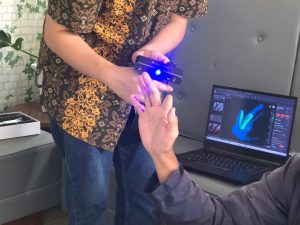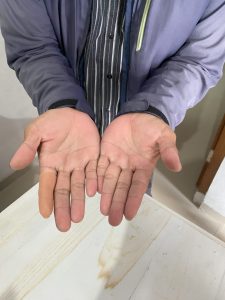Collaborative Innovation Project in Making Prosthetic Fingers: Industrial Engineering and Fashion Design
In a world driven by innovation and technology, the multidisciplinary collaboration of Binus University researchers from the Master of Industrial Engineering and Fashion Design Department, Binus International, led by Christian Harito, Ph.D., and Grasheli Kusuma Andhini, MA., BA., is making progress in the field of prosthetics. Supported by a Kedaireka Grant from the Ministry of Education and Culture of the Republic of Indonesia, this team collaborated with partner PT Teknomedika Manufaktur Inovasi to create personalized and realistic partial finger prosthetics through 3D scanning and 3D printing. Making finger prosthetics involves a multidisciplinary background such as industrial engineering for scanning and 3D printing as well as fashion design to create realistic human fingers.
Wilson Sutanto, a Master of Industrial Engineering student at Binus, played an important role in developing the technical aspects of the artificial finger. His expertise in engineering is essential in ensuring that 3D printed prosthetics not only look realistic but also function effectively.
This team also involves students Nico Chainando, Marcel Martawidjaja, Leonardo Carlos Yahya, Sharon Yemima, and Raphael Albert Darius, all of whom are currently studying Binus Industrial Engineering Bachelor’s degree. Their innovative thinking and problem-solving skills contributed to the refinement of the prosthetic design, ensuring that each finger was not only functional but also comfortable to wear.
In the field of aesthetics, Rafa Callista and Tashannie Abigail, fashion management and fashion design students respectively, faced the challenge of adjusting the skin color for each artificial finger. Matching the skin color of the prosthetic to the patient’s skin is an important aspect of this project. Their expertise in fashion and design has proven invaluable in creating prosthetics that not only function well but also look and feel like a natural extension of the body.
This activity is also covered in Fimela:
https://www.fimela.com/health/read/5465704/prostetik-jari-dengan-metode-3d-printing-jadi-solusi-pasien-amputasi?page=3



